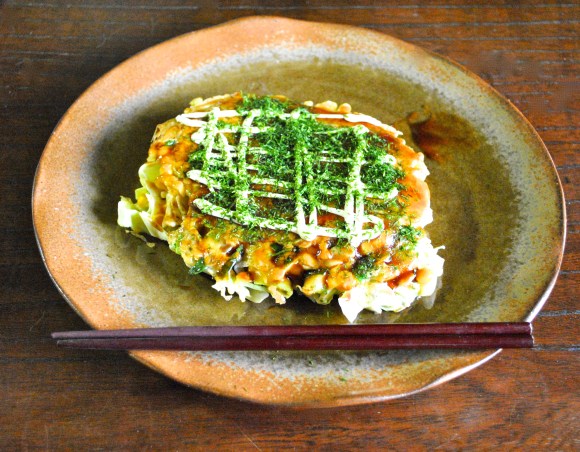
Okonomiyaki is one of the most popular foods cooked at home in Japan. One of Japan’s Top 10 Comfort Foods, the dish is fun to make with family or friends and best of all, it’s easy! Okonomiyaki is also popular with foreigners who when visiting Japan can sample the dish at any of the myriad specialty restaurants dedicated to this vegetable-rich meal.
So, what exactly is okonomiyaki? And how do you make it? Glad you asked!
Read on to find out more about this simple dish: watch a how-to video showing you how to make it, check out photos that show you some unusual ingredients, and get inside tips from Kazuko who regularly makes the dish for her seven grandchildren.
I recently saw this food defined as “pan-fried batter cake,” but don’t be fooled. It has nothing to do with baseball. Or cake. A vegetable pancake would be the closest description, but you can make the dish with or without meat. While it took me forever to learn how to pronounce the dish’s name (o-koh-no-me-ya-key お好み焼き) when I first came to Japan (I could only reproduce the word was by thinking of the Spanish “economia” and adding ki) it is easier to grasp once you understand a bit of Japanese.
Konomi means “your liking” , and is given the polite “o” that we often see placed in front of words like “obento” (boxed lunch) and “ofuro” (bath). The yaki part means “grilled.” Think tako-yaki (grilled octopus), yaki-tori (grilled chicken) and yaki imo (grilled sweet potato). Okonomi refers to the way it is prepared: to your liking, or in simpler terms “as you like it.” This results in no-rules-okonomiyaki, a great feast for anyone who loves to embellish recipes. And that’s pretty much everyone, right?
In order to get the very best advice on how to cook this no-holds-barred, anything goes dish, however, I decided to turn to a pro: my neighbor Kazuko.
I’ve lived next-door to Kazuko for almost 20 years and we’ve been through a lot together: her daughters’ weddings, family funerals, dog and cat-sitting, and now an array of grandchildren who come and go over the holidays. Her culinary skills have developed over many years and I have been a beneficiary as she has cooked for me as if I were another member of her family. And she cooks with ingredients straight from her vegetable garden!
So when I asked her to teach us here at RocketNews24 how to make okonomiyaki at home, she was happy to oblige, and brought over appliances and implements to my kitchen to make Kansai-style version. As I document our culinary mission, I’ve added some of her personal tips for making successful okonomiyaki. In the video, you can watch as Kazuko makes the dish herself.
What you’ll need
Restaurants cook okonomiyaki on a teppan grill, but most Japanese people have an electric grill they use at home on which they can make two or more pancakes at the same time. You can also use a frying pan and make them one at a time if you don’t mind waiting a little longer between “courses.” You’ll need a mixing bowl for the ingredients, a large spoon and two spatulas.
Ingredients:
You’ll need eggs, okonomiyaki flour, and cabbage and scallions make up the bulk of the mix. Most people will add more things, such as shredded carrot, mochi, corn, squid, shrimp or really, anything at all, or, “as you like it!” If it feels right, add it!
The toppings consist of okonomiyaki sauce (sweet and sticky), nori seaweed and dried bonito flakes. These are the basic toppings but you can add or subtract them as you like. Mayonnaise is also a very popular topping, preferably out of a squeeze bottle so you can make fun criss-cross patterns on top (see video at the end of the article).
At the end of the article we also have a photo of the ingredients still in their packages, so you’ll know what to buy at the store.
Here are the dry ingredients you’ll need.
▼Clockwise from top-left: katsuo bushi (dried bonito flakes), okonomiyaki flour, nori (seaweed) and okonomiyaki sauce.
These are the fresh ingredients you’ll need. Feel free to add whatever you like too.
▼Negi (scallions), egg, thin cuts of pork belly, and cabbage. We also added yamaimo, which is the long, brown root vegetable.
Preparing the Ingredients:
For two people (one pancake each) the recommended portions of ingredients are: one cup of okonomiyaki flour, 3/4 cup of water, one egg, 300 grams of cabbage, a few scallions (chopped, including the tops) and pork (one slice for each pancake). But if that’s not easy enough for you, just eyeball it and make it “as you like!”
Kazuko’s Tip No. 1: Instead of water, use dashi (Japanese soup stock) for a richer blend.
We made enough okonomiyaki for three people and used one half of a cabbage (shredded), two eggs, four scallions (use the tops too), unmeasured handfuls of okonomiyaki flour, a cup of corn, some dashi and a chunk of yamaimo.
Yamaimo, a tuber, goes by the formal name of Dioscorea polystachya. It’s slimy and kinda disgusting when eaten raw (it makes your mouth itch) but don’t worry, you won’t get that sensation when it’s mixed into okonomiyaki. If you’re new to yamaimo, you’ll need some instructions.
▼First, take the skin off the potato with a regular potato peeler or a fruit peeling knife. Next you’re going to grate it.
▼You can use a traditional box grater, but the Japanese graters with these funky holes work much better.
▼The yamaimo will be slippery in your hands but it’s very soft so will grate easily and quickly. It will also turn into a gooey liquid, which is good! It’s used as a binding agent, like raw eggs, so actually adds to the texture of okonomiyaki. I know, hard to believe.
If you you’re a vegetarian or don’t want to use eggs in your batter, be sure to use yamaimo to bond the mixture.
Mixing the Batter
Put the cabbage, okonomiyaki flour, eggs, water or dashi, scallions, and all the other vegetables you’ve chosen into a large bowl and mix with a spoon.
▼The consistency should ultimately look like this, with a coating of batter visible on the vegetables.
Cooking the Okonomiyaki
Japanese electric hot plates have a special okonomiyaki setting, but you can put your element on medium heat and that should do the job. You’ll have to adjust the temperature and amount of cooking time accordingly; chunky vegetables and meat will take longer to cook so may need lower heat.
When the skillet is hot and ready to please, place a few ladles of the mixture onto the grill for each pancake. The pancake will be very thick and a bit unruly, but give it time and as the cabbage cooks, it will soften and the pancake will flatten out as it gets thinner. Don’t be tempted to press down onto the pancake with your spatula – some gentle shaping is fine, but too much pressure will result in a heavy, stodgy pancake.
Kazuko’s Tip No. 2: Some people put the pork on the grill first, placing the ladles of batter and veggie mixture on top of it. Kazuko suggests, however, putting the meat in the middle of the pancake. Meat cooked on the inside of the mixture will be softer, she says. On the newer griddles, you shouldn’t need oil but if you’re using a frying pan, you can add a tiny drop of vegetable oil if you want.
▼We’ve made two pancakes, one meatless and one with meat.
▼Once the meat is placed on the pancake, add another dollop of cabbage mixture to cover it up.
You should have at least one spatula in your hand at all times so you can check the underside of the pancake to see how it is cooking and to make sure it isn’t sticking. Continue to give it love taps on the sides (see video) to keep it together and make sure the nice round shape is maintained.
Flipping the Pancake
When the bottom of the pancake looks golden brown, it is ready for a flip to cook the other side. This is the tricky part! Try to flip the pancake without breaking it into two (or more) pieces. Use two spatulas.
Kazuko’s Tip No. 3: If you’re having problems pulling off a successful flip, it may be because your batter is too thin. Add more okonomiyaki flour.
▼Nice flip job! Now you’ll need more love taps on the sides to regain the roundness.
Adding the Toppings
After more gentle taps and bottom checks, when the second side is golden and the meat has cooked thoroughly, use the two spatulas to take the okonomiyaki off the hot plate and put it on a dish.
Kazuko’s Tip No. 4: If your okonomiyaki is taking too long to cook all the way through, next time cut the cabbage into thinner slices so that it doesn’t take so long to cook. Smaller pieces of cabbage will also be easier for children and the elderly to eat.
▼Now, ready for toppings!
The Japanese always brush on okonomiyaki sauce with a special brush (see video) but if you don’t have one, you can just pour it on and smooth it over with a spoon.
▼Next, layer the seaweed and katsuo flakes on top.
Some people choose to add mayonnaise (see video) or use a combination of toppings.
▼Tadaaaaaa! Ready to eat.
And you’re all done!
Here’s the cooking process in a super-speedy video. Be sure to add it to your favorites for easy reference later!
Thanks for joining us in the RocketKitchen! Now you are ready to make okonomiyaki as its name implies – as you like it! If you find some unusual but tasty ingredient, please let us know in the comments section!
▼Packaged ingredients, left to right: Katsuo bushi, okonomiyaki sauce, nori seaweed, okonomiyaki flour.
If you like okonomiyaki, you’ll surely like monjayaki too. Learn how to make it!
All images © Amy Chavez/SoraNews24

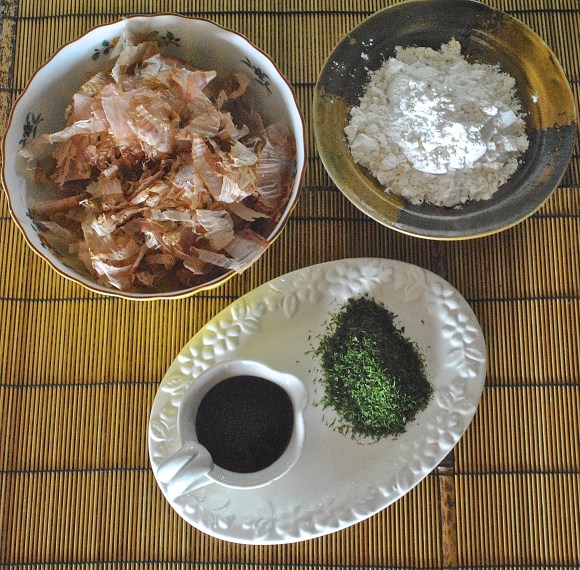
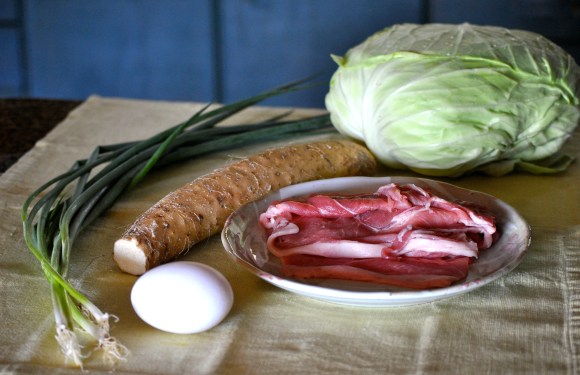
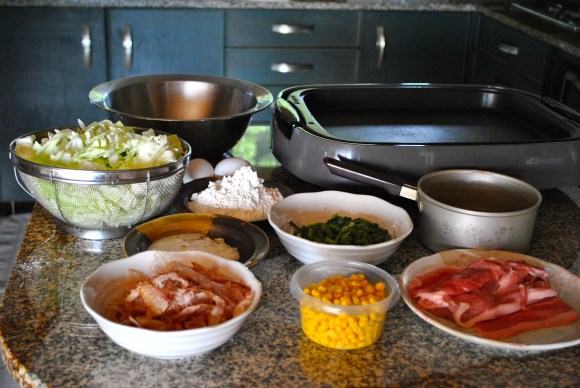
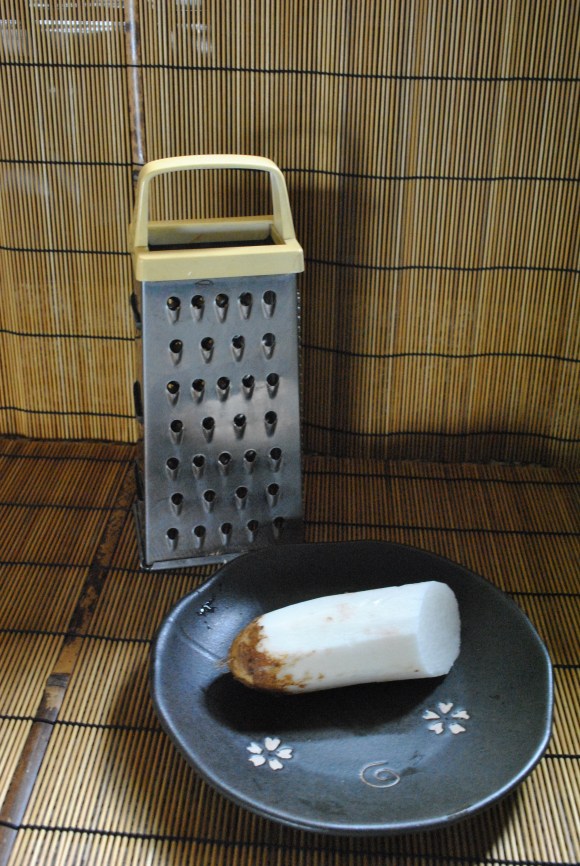
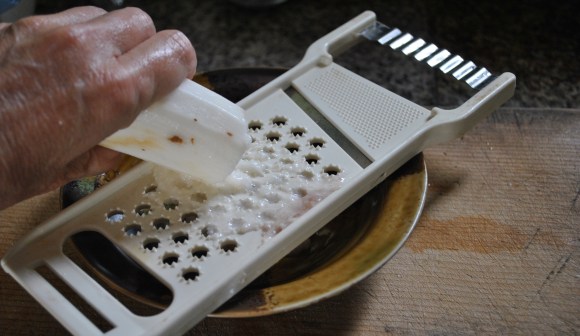
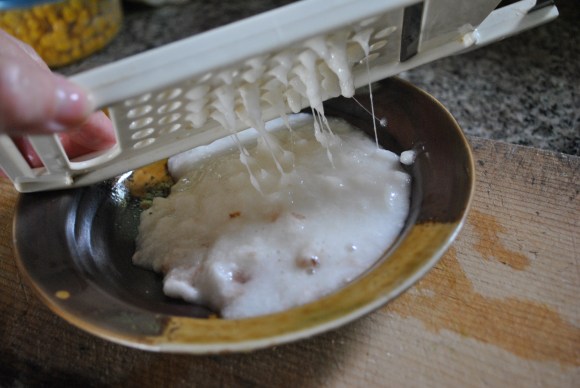

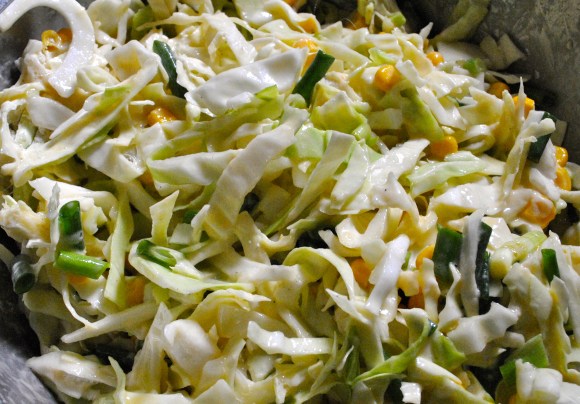
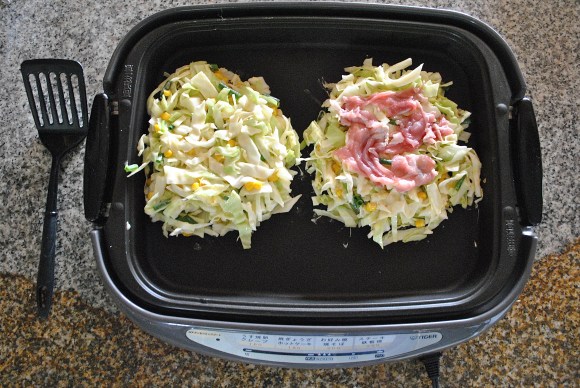
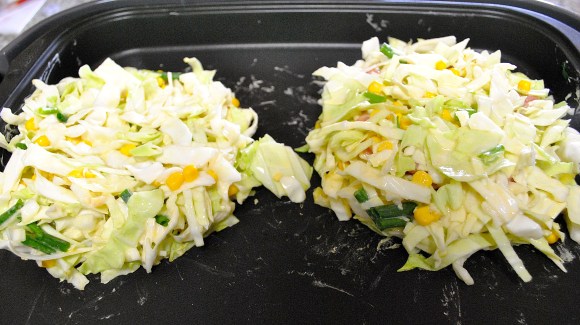
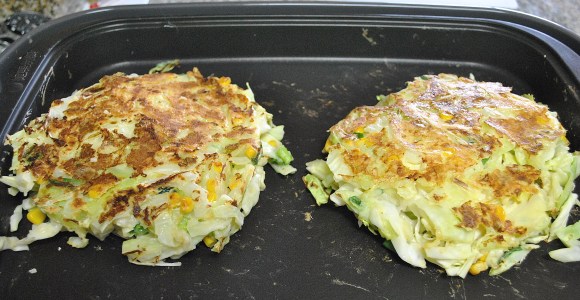
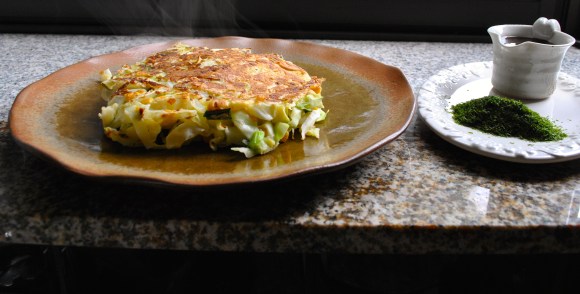
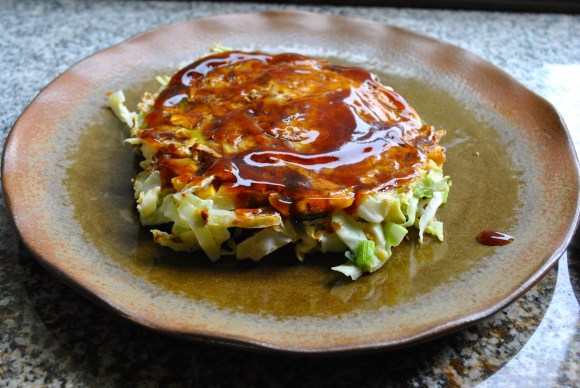
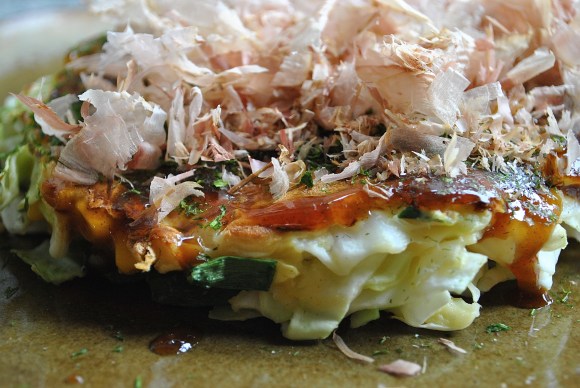
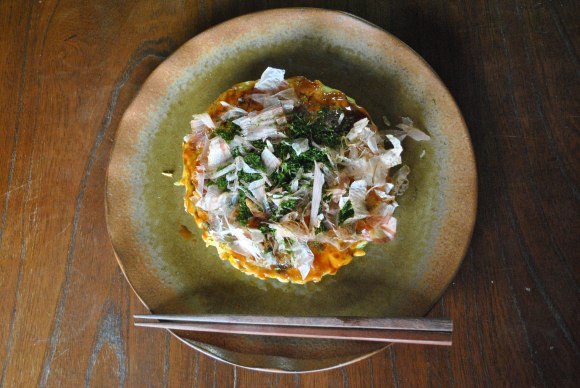
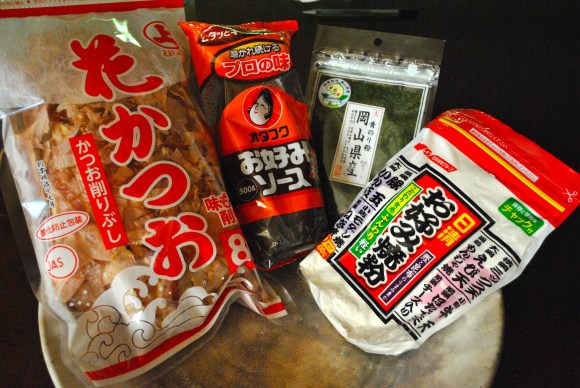
 Lawson convenience store teaches us how to make okonomiyaki with no knife or bowl 【SoraKitchen】
Lawson convenience store teaches us how to make okonomiyaki with no knife or bowl 【SoraKitchen】 Monjayaki, the popular Tokyo dish you’ve probably never heard of 【RocketKitchen】
Monjayaki, the popular Tokyo dish you’ve probably never heard of 【RocketKitchen】 Rice cooker recipe: How to make a giant cheesy okonomiyaki pancake in a rice cooker
Rice cooker recipe: How to make a giant cheesy okonomiyaki pancake in a rice cooker Tired of your usual camping fare? Try this easy Japanese festival favorite【SoraKitchen】
Tired of your usual camping fare? Try this easy Japanese festival favorite【SoraKitchen】 Best all-you-can-eat okonomiyaki in Japan? Restaurant chain serves up a feast for under $14
Best all-you-can-eat okonomiyaki in Japan? Restaurant chain serves up a feast for under $14 Nintendo releases Metroid-shaped ice cube/cooking tray and Samus arm cannon pillow【Pics】
Nintendo releases Metroid-shaped ice cube/cooking tray and Samus arm cannon pillow【Pics】 Foreign driver’s license conversion test passes plummet from over 90% to 33% in Japan
Foreign driver’s license conversion test passes plummet from over 90% to 33% in Japan Is China’s don’t-go-to-Japan warning affecting tourist crowds in Shibuya’s Don Quijote?
Is China’s don’t-go-to-Japan warning affecting tourist crowds in Shibuya’s Don Quijote? Japan’s human washing machines will go on sale to general public, demos to be held in Tokyo
Japan’s human washing machines will go on sale to general public, demos to be held in Tokyo This Osaka laundromat wants to clean more than your clothes; it also wants to clean you
This Osaka laundromat wants to clean more than your clothes; it also wants to clean you Burger King Japan’s newest all-you-can-eat burger deal is its smelliest yet
Burger King Japan’s newest all-you-can-eat burger deal is its smelliest yet Japan’s EF English Proficiency Index rank drops for 11th straight year, hits lowest ever
Japan’s EF English Proficiency Index rank drops for 11th straight year, hits lowest ever Studio Ghibli holiday wreath adds a touch of Kiki cuteness and good fortune to your home【Photos】
Studio Ghibli holiday wreath adds a touch of Kiki cuteness and good fortune to your home【Photos】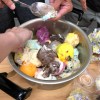 We mixed all 31 flavors of Baskin Robbins ice cream and created a Frankenstein dessert【Video】
We mixed all 31 flavors of Baskin Robbins ice cream and created a Frankenstein dessert【Video】 Kentucky Fried Chicken has all-you-can-drink beer in Tokyo for less than 10 bucks
Kentucky Fried Chicken has all-you-can-drink beer in Tokyo for less than 10 bucks Japanese train company is letting fans buy its actual ticket gates for their homes
Japanese train company is letting fans buy its actual ticket gates for their homes Yoshinoya adds first-ever chain-wide ramen with new beef and pork-broth noodle hot pot meals
Yoshinoya adds first-ever chain-wide ramen with new beef and pork-broth noodle hot pot meals Nintendo’s Kirby now delivering orders at Kura Sushi restaurants, but not in Japan
Nintendo’s Kirby now delivering orders at Kura Sushi restaurants, but not in Japan Japan considering raising international traveler departure tax even more than previously reported
Japan considering raising international traveler departure tax even more than previously reported Is China’s don’t-go-to-Japan warning affecting tourist crowd sizes in Nara?
Is China’s don’t-go-to-Japan warning affecting tourist crowd sizes in Nara? Studio Ghibli stamps lift your spirits with motivational phrases from Totoro
Studio Ghibli stamps lift your spirits with motivational phrases from Totoro New fish discovered and named “Vanderhorstia supersaiyan” for obvious reasons
New fish discovered and named “Vanderhorstia supersaiyan” for obvious reasons Japanese town suing resident for being a jerk
Japanese town suing resident for being a jerk Starbucks Japan unveils new Christmas goods and a rhinestone tumbler that costs 19,500 yen
Starbucks Japan unveils new Christmas goods and a rhinestone tumbler that costs 19,500 yen Real-world Nausicaa Ghibli anime glider completes its final flight in Japan【Video】
Real-world Nausicaa Ghibli anime glider completes its final flight in Japan【Video】 Brand-new Pokémon park opens in Japan with larger-than-life-size Lapras【Photos】
Brand-new Pokémon park opens in Japan with larger-than-life-size Lapras【Photos】 Unique inclined elevator in Japan leads to a town that inspired Studio Ghibli’s Spirited Away
Unique inclined elevator in Japan leads to a town that inspired Studio Ghibli’s Spirited Away Is China’s don’t-go-to-Japan warning affecting tourist crowds in Tokyo’s Asakusa neighborhood?
Is China’s don’t-go-to-Japan warning affecting tourist crowds in Tokyo’s Asakusa neighborhood? The 10 best day trips from downtown Tokyo【Survey】
The 10 best day trips from downtown Tokyo【Survey】 Naturally brown-haired Osaka student sues government for forcing her to dye her hair black
Naturally brown-haired Osaka student sues government for forcing her to dye her hair black Tokyo hotel lets you make your stay a Sanrio one with special My Melody and Kuromi rooms【Pics】
Tokyo hotel lets you make your stay a Sanrio one with special My Melody and Kuromi rooms【Pics】 Survey asks foreign tourists what bothered them in Japan, more than half gave same answer
Survey asks foreign tourists what bothered them in Japan, more than half gave same answer Japan’s deadliest food claims more victims, but why do people keep eating it for New Year’s?
Japan’s deadliest food claims more victims, but why do people keep eating it for New Year’s? We deeply regret going into this tunnel on our walk in the mountains of Japan
We deeply regret going into this tunnel on our walk in the mountains of Japan Studio Ghibli releases Kodama forest spirits from Princess Mononoke to light up your home
Studio Ghibli releases Kodama forest spirits from Princess Mononoke to light up your home Major Japanese hotel chain says reservations via overseas booking sites may not be valid
Major Japanese hotel chain says reservations via overseas booking sites may not be valid Put sesame oil in your coffee? Japanese maker says it’s the best way to start your day【Taste test】
Put sesame oil in your coffee? Japanese maker says it’s the best way to start your day【Taste test】 The top 10 annoying foreign tourist behaviors on trains, as chosen by Japanese people【Survey】
The top 10 annoying foreign tourist behaviors on trains, as chosen by Japanese people【Survey】 No more using real katana for tourism activities, Japan’s National Police Agency says
No more using real katana for tourism activities, Japan’s National Police Agency says J-pop mega star Ado reveals she’s been living in the U.S., may not understand language acquisition
J-pop mega star Ado reveals she’s been living in the U.S., may not understand language acquisition Move over ramen and udon, “cup okonomiyaki” has come to play*
Move over ramen and udon, “cup okonomiyaki” has come to play* Cup Noodle maker’s super-easy recipe turns instant noodles into quick okonomiyaki【Recipe】
Cup Noodle maker’s super-easy recipe turns instant noodles into quick okonomiyaki【Recipe】 Here’s the oldest recipe for Japanese curry in existence, and how it tastes【SoraKitchen】
Here’s the oldest recipe for Japanese curry in existence, and how it tastes【SoraKitchen】 Microwavable okonomiyaki that you can eat with one hand? Yes, please!
Microwavable okonomiyaki that you can eat with one hand? Yes, please! We visited the famous monjayaki street and ate until we burst!
We visited the famous monjayaki street and ate until we burst! Japan’s longest-running okonomiyaki joint and the birthplace of Hiroshima style — We visit both
Japan’s longest-running okonomiyaki joint and the birthplace of Hiroshima style — We visit both We try making Nisshin’s Jijimi Korean Pancakes in a cup kit【SoraKitchen】
We try making Nisshin’s Jijimi Korean Pancakes in a cup kit【SoraKitchen】 Got a hankering for hanpen? Here’s how to make your own Japanese fish cakes【SoraKitchen】
Got a hankering for hanpen? Here’s how to make your own Japanese fish cakes【SoraKitchen】 We learn how to make tofu with this at-home make-your-own tofu kit【SoraKitchen】
We learn how to make tofu with this at-home make-your-own tofu kit【SoraKitchen】 Celebrate Halloween with our recipe for jack-o’-lantern nikuman steamed buns【RocketKitchen】
Celebrate Halloween with our recipe for jack-o’-lantern nikuman steamed buns【RocketKitchen】 Taco Bell Osaka branches now selling okonomiyaki burritos, promise delicious fusion flavor
Taco Bell Osaka branches now selling okonomiyaki burritos, promise delicious fusion flavor Put a unique twist on your oatmeal by turning it into some Japanese comfort food
Put a unique twist on your oatmeal by turning it into some Japanese comfort food How to make amazing sweet apple pancakes using a rice cooker 【RocketKitchen】
How to make amazing sweet apple pancakes using a rice cooker 【RocketKitchen】 How to make your own Pikachu Burgers!【RocketKitchen】
How to make your own Pikachu Burgers!【RocketKitchen】 Japanese politician apologizes to prime minister for calling wife’s cooking “Hiroshima-yaki”
Japanese politician apologizes to prime minister for calling wife’s cooking “Hiroshima-yaki” We substitute mirin for sugar in pudding and then taste it ourselves 【Rocket Kitchen】
We substitute mirin for sugar in pudding and then taste it ourselves 【Rocket Kitchen】
Leave a Reply